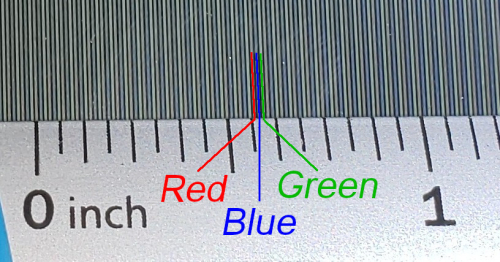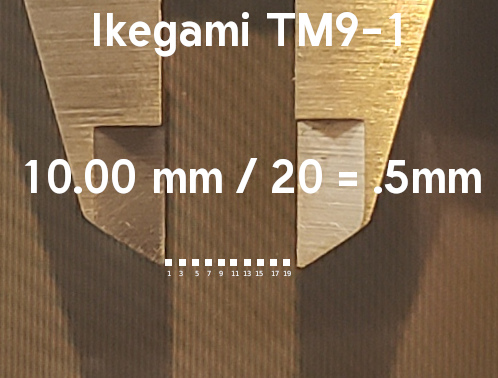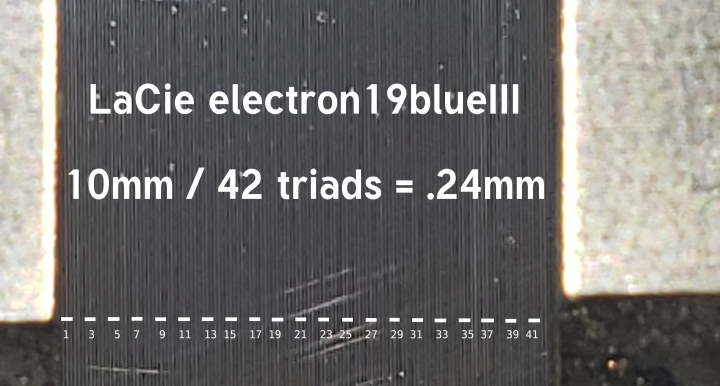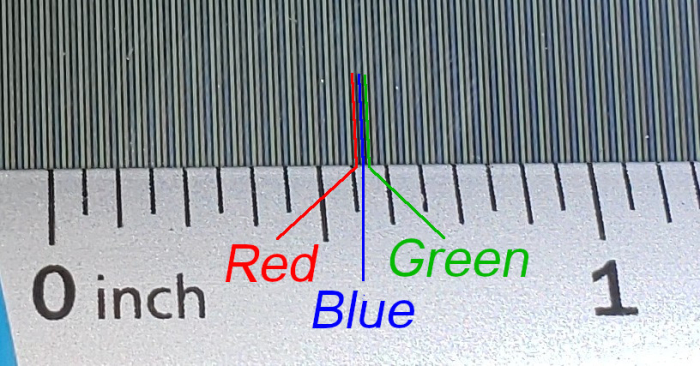Table of Contents
Introduction

The number of TV Lines (or the horizontal resolution) of a color CRT is largely determined by the pitch of the tube and the electron beam spot size. Pitch is generally the distance at which a like phosphor color is repeated, though manufacturers calculate pitch in various ways[1]. Most color tubes have a variable pitch, being finest at the center of the screen and gradually getting wider/coarser moving towards the edges. In contrast, Diamondtron tubes for example have the same pitch whether at the center or the edges.

Rather than suggesting a single universal method, this guide is intended to demonstrate methods that will replicate measurements per manufacturer, and hence be useful for comparison to already published specs. The methods listed may apply to other manufacturers as well. Rather than directly measuring a sub-millimeter distance, which can be a fiddly, a distance of 10.00 millimeters will be used, and a calculation drawn from the number of stripes in that distance. One stripe is composed of an RGB triad.
JVC, Ikegami, Sony
Rather than publishing two different numbers (center & edge) or averaging those two values, JVC published the measurement at the midpoint between the center and edge of the viewable area. Sony often (but not always) did this for variable pitch tubes as well.
For demonstration, the Panasonic A22JWG098X is a 9" tube used in professional monitors by JVC & Ikegami, as well as in consumer TVs by Toshiba & Orion. Its published stripe pitch is .5 millimeters.

-
Find the visible screen width, either by measuring directly or approximately deriving by multiplying the diagonal visible size by .788. In this example 222 mm x .788 = 175 mm.
-
Divide that number by four and measure that distance from either viewable side edge and you will have the midpoint between the center and edge. 175 mm / 4 = 43.75 mm

- Count the number of stripes within a 10mm distance centered on that point. An easy way to do this is to take a picture of the screen with calipers overlaid (or other length measuring tool), and then on a computer mark off every other triad for ease of keeping track. In this case, it is 20 total triads.

- Divide ten by that number, 10 / 20 = .5 mm, matching the published spec.
Mitsubishi Diamondtron, LaCie
Because these tubes do not have variable pitch, one may measure anywhere on screen. An electron19blueIII will be used for demonstration.

- Count the number of stripe triads within a 10mm distance. An easy way to do this is to take a picture of the screen with calipers overlaid (or other length measuring tool), and then on a computer mark off every other triad for ease of keeping track. In this case, 42 triads total.

- Divide ten by the number of triad stripes. In this example, 10mm / 42 = .24 mm, matching published specs.

 This work is licensed under a
This work is licensed under a